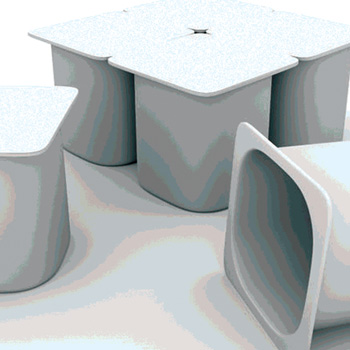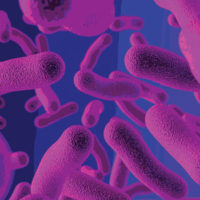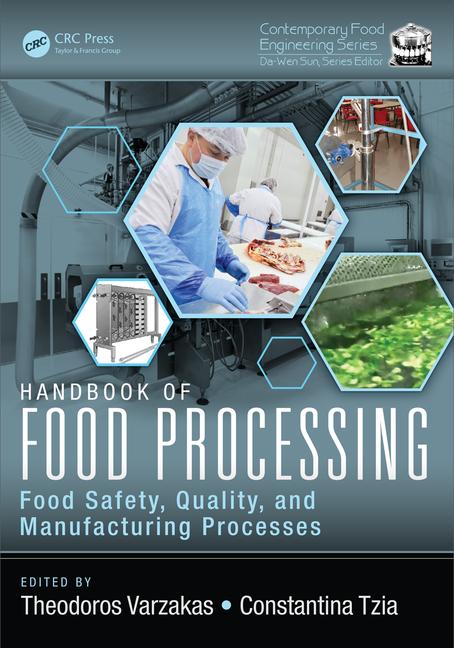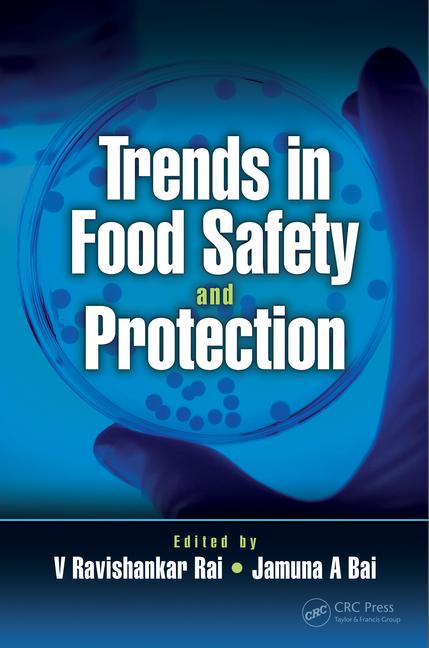FDA Regulation of Adhesives in Food Packaging

U.S. Food and Drug Administration (FDA) regulation of the use of adhesives in food packaging differs somewhat from how the agency regulates other food contact substances. While FDA regulations for indirect food additives tend to focus on the food contact substance itself, the requirements specified for adhesives place more of the burden of regulatory compliance on the manufacturers of food packaging that contains adhesives and manufacturers of the finished food product.
To better understand FDA’s regulations of adhesives used in food packaging, let’s start with a few definitions. FDA defines a food additive as “…any substance the intended use of which results, or may reasonably be expected to result…in its becoming a component or otherwise affecting the characteristics of any food,” unless it is exempted from the definition of a food additive [e.g., a color additive, generally recognized as safe (GRAS), prior sanctioned]. There are three types of food additives (direct, secondary direct and indirect), which are discussed later in this article. Such food additives require FDA premarket clearance.
A food contact substance is any substance intended for use as a component of materials used in the manufacturing, packing, packaging, transportation or holding of food that is not intended to have a technical effect in food. Importantly, not all food contact substances are food additives, only those that migrate to the food above a de minimis amount. This is significant because only food contact substances that are also food additives (i.e., are reasonably expected to become a component of the food) require FDA premarket clearance.
As mentioned previously, there are three types of food additives: 1) direct, or food ingredients; 2) secondary direct, or those added to food during processing but are later removed; and 3) indirect, or food packaging and other food contact materials. The first step to determine the FDA status of an indirect food additive is to determine if it is the subject of a regulation.
FDA clears the use of various substances that may be used in adhesive formulations intended for the packaging, transporting or holding of food under Title 21 of the Code of Federal Regulations (C.F.R.) Section 175.105. A manufacturer of an adhesive formulation, therefore, may use any substance listed under Section 175.105(c) in its adhesive formulation subject to any limitations on the use of that substance provided in the regulation. What makes Section 175.105 somewhat unique is that it also places physical limitations on how the manufacturer of finished food packaging may use adhesive formulations in the finished food contact articles. Specifically, under Section 175.105(a)(2), manufacturers of finished food packaging must ensure that adhesives either:
(a) Are separated from food by a functional barrier or
(b) Are used subject to the following additional limitations:
1) The quantity of adhesive contacting packaged dry food does not exceed the limits of Good Manufacturing Practices (GMPs) and
2) The quantity of adhesive contacting aqueous and fatty foods does not exceed trace amounts at the seams and edges of packaging laminates that may occur within the limits of GMPs.
Functional Barriers
Substances separated from food by a functional barrier so that they are prevented from migrating to food (as required under Section 175.105) are not reasonably expected to become components of food and, thus, are not properly considered food additives. Consequently, in many cases, adhesive formulations may also contain substances that are not explicit-ly listed in Section 175.105 and still be used as intended. The functional barrier concept was strengthened in the 1975 case of Natick Paperboard v. Weinberger, 525 F.2d 1103 (1st Cir. 1975).
In the Natick case, the court addressed the issue of whether polychlorinated biphenyl (PCB) contaminants were impermissible food additives. The court stated that if “the food placed in or to be placed in the paper container is or will be insulated from PCB migration by a barrier impermeable to such migration, so that contamination cannot reasonably be expected to occur, the paperboard would not be a food additive.” Structural analysis using the anticipated conditions that a package will be exposed to or migration testing can be used to establish that a true barrier exists.
Hence, manufacturers of finished food packaging containing an adhesive meet the requirements of Section 175.105 only if the adhesive is used in a manner that prevents it from becoming a component of food or if the adhesive is otherwise used in a manner that does not result in its migration to food. In a sense, the adhesive regulation pertains to the use of substances that are not strictly speaking “food additives.” As mentioned above, food contact substances that are not food additives do not require FDA premarket clearance.
Section 175.105 does not include any temperature limitations. However, in the FDA Guidance Preparation of Premarket Submissions for Food Contact Substances: Chemistry Recommendations, 2007, the section on adhesives includes a temperature restriction. The guidance outlines that for adhesives used at room temperature or below, “If the adhesive is either separated from food by a functional barrier, or the quantity of adhesive that contacts aqueous and fatty food is limited to the trace amount at seams and edges, then migration levels for the substances generally will be assumed to be no greater than 50 ppb.” The Chemistry Guide adds that the migration protocol corresponds to Condition of Use E, which is for packaging material that is room temperature filled and stored, and does not undergo thermal treatment.
Adhesives in Multilayer Laminates
Subsequent to promulgating Section 175.105, FDA issued regulations clearing the use of adhesives used in multilayer food packaging laminates. Both 21 C.F.R. Sections 177.1395 (laminated structures for use at temperatures between 120 °F and 250 °F) and 177.1390 (laminated structures for use at temperatures of 250 °F and above) permit the optional use of adhesives in such packaging.
Section 177.1390(c)(2) specifically permits adhesive formulations to be used with laminated structures that will be exposed to temperatures of 250 °F and above, and may include substances that comply with Section 175.105 if they are separated from the food by a functional barrier. Additionally, the formulations may include “any substance suitable for use in formulating adhesives that complies with an applicable regulation of this chapter which permits food type and time/temperature conditions to which the container will be exposed, including sterilization processing.” Section 177.1390 also provides a list of substances that may be used in these formulations, along with restrictions.
Section 177.1395, which focuses on laminated structures used at temperatures between 120 °F and 250 °F, does not specifically address adhesives. It does, however, note that it is intended to cover adhesives in which the food contact layer does not function as a barrier to migration of components from non-food contact layers. Presumably, this is because if there is a functional barrier, no clearance under the regulation would be required.
Migration Testing
As mentioned above, components of adhesives for use in food packaging that are not the subject of a food additive regulation, GRAS or prior sanctioned may still be used if they are not reasonably expected to become a component of the food. This can be determined through migration studies. In designing migration studies, an understanding of the intended use of the adhesive is necessary. For example, will it be used in a multilayer laminated package or a paper box or some other structure? Samples for testing must be prepared under the same manufacturing conditions as the end use. These include film types and thickness, amount of adhesive used, adhesive composition and cure times.
Migration testing also needs to account for the intended end use of the food package containing the adhesive, such as types of foods (dry, acidic, fatty) and processing temperatures (hot-fill, retort, room temperature). These factors will dictate the types of food-simulating solvents that should be used in the migration studies, and the temperature and duration of the studies. After the migration studies are complete, analyses of the test sample extract are conducted to determine if, and to what extent, the substance is anticipated to become a component of food when used as intended. Migration testing typically requires 10 days or more to conduct and usually employs sophisticated, computer-controlled instrumentation.
Another type of testing is compliance or end tests that can be required to ensure that an adhesive component or other packaging material conforms to applicable regulations or notifications. Compliance tests are less complex than migration testing, of shorter duration (usually 2 hours or less, but can be as long as 48 hours) and are akin to quality control tests.
Other Clearances
If a substance for use in a food contact adhesive is not the subject of a food additive regulation, it may also be cleared by FDA through a threshold of regulation (TOR) exemption or a food contact notification (FCN). To qualify for a TOR exemption, the calculated concentration of the food contact substance in the diet resulting from its intended use should not exceed 0.5 ppb for most food contact substances. Additionally, the food contact substance can neither be carcinogenic nor have impurities that are potential carcinogens. This threshold applies to the dietary concentration, not the migration level. The dietary concentration is calculated by applying appropriate reduction factors (i.e., food-type distribution and consumption factors) to the measured or calculated worst-case migration values.
TORs are not proprietary to the submitter and, therefore, anyone can use a cleared substance under the conditions specified in the TOR exemption.
Components of adhesive formulations can also be cleared by FDA through an FCN. However, an FCN clears only the food contact substance of the manufacturer/supplier listed in the FCN. Since the FCN program was implemented in 2000, it has become the preferred method to obtain FDA clearance for food contact substances. Under the program, a manufacturer or supplier of a food contact material may submit an FCN that includes the identity and intended use of the new food contact substance, along with information supporting the conclusion that the substance is safe for its intended use.
Generally speaking, for substances whose dietary intake exceeds 0.5 ppb, some amount of toxicity data will be needed to demonstrate its safety. For low dietary intakes of up to 50 ppb, this means submitting reports of in vitro genotoxicity assays, such as an Ames test and mouse lymphoma or chromosome aberration study. If the dietary exposure is higher than 50 ppb, it may be necessary to submit more extensive toxicity data, including a subchronic oral study in rats and, possibly, the same study in dogs. In this case, it is important that these studies demonstrate a clear no-observed adverse effect level (NOAEL) and that this NOAEL exceeds the calculated dietary exposure by a safe margin. Generally speaking, the minimum safe margin of exposure determined from subchronic studies should be 1,000-fold.
Suitable Purity Required
Finally, adhesives in food packaging and other food packaging materials must comply with FDA’s GMP regulation, found in 21 C.F.R. Section 174.5, “General provisions applicable to indirect food additives.” The most critical GMP requirement for packaging materials is that they be suitably pure for their intended use. This means that the food contact material may not impart anything to food that can make it harmful or deleterious to health or impart an off-taste or odor to food. In this regard, FDA points out that even if a food contact material complies in all respects with the specifications or limitations set out in the applicable regulations, its use will be viewed as violating the Federal Food, Drug, and Cosmetic Act if it results in adulteration of food.
A specific GMP requirement related to adhesives used in flexible food packaging is that they must be adequately cured. This is to ensure that components, particularly starting materials of the adhesive, are not present at levels higher than in the testing done to establish that they do not migrate to food.
In summary, the regulatory status of an adhesive for use in food packaging is determined by the regulatory status of each individual substance that constitutes the adhesive. Any individual substance that is reasonably expected to migrate to food because of its intended use in the adhesive must be GRAS, prior sanctioned or the subject of a food additive regulation, a TOR exemption or an effective FCN. However, if it can be established that the adhesive is separated from food by a functional barrier and used in accordance with applicable GMPs, premarket clearance from FDA is not legally required. Of course, a customer may still demand the added assurance of an FDA sanction prior to using the adhesive.
 George G. Misko, Esq., is a partner in the Washington, DC, office of Keller and Heckman LLP. His practice focuses on food and drug matters and environmental concerns, including pesticide regulation and chemical control regulations. He has extensive experience counseling clients on regulatory requirements relating to chemical substances, plastics and food products in the U.S. and other jurisdictions, including Canada, the EU, Latin America and the Pacific Rim. He also has experience in civil trial and appellate matters. He can be reached at misko@khlaw.com.
George G. Misko, Esq., is a partner in the Washington, DC, office of Keller and Heckman LLP. His practice focuses on food and drug matters and environmental concerns, including pesticide regulation and chemical control regulations. He has extensive experience counseling clients on regulatory requirements relating to chemical substances, plastics and food products in the U.S. and other jurisdictions, including Canada, the EU, Latin America and the Pacific Rim. He also has experience in civil trial and appellate matters. He can be reached at misko@khlaw.com.
Looking for a reprint of this article?
From high-res PDFs to custom plaques, order your copy today!








